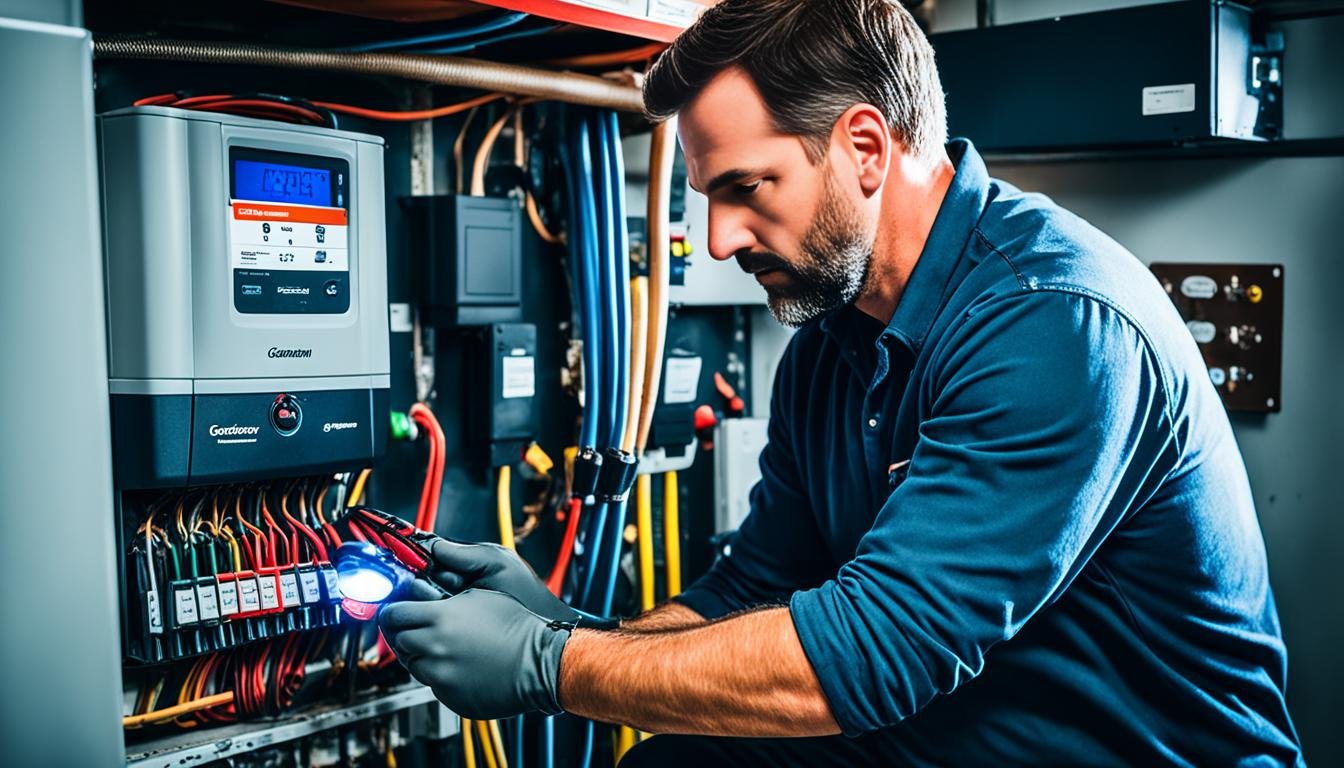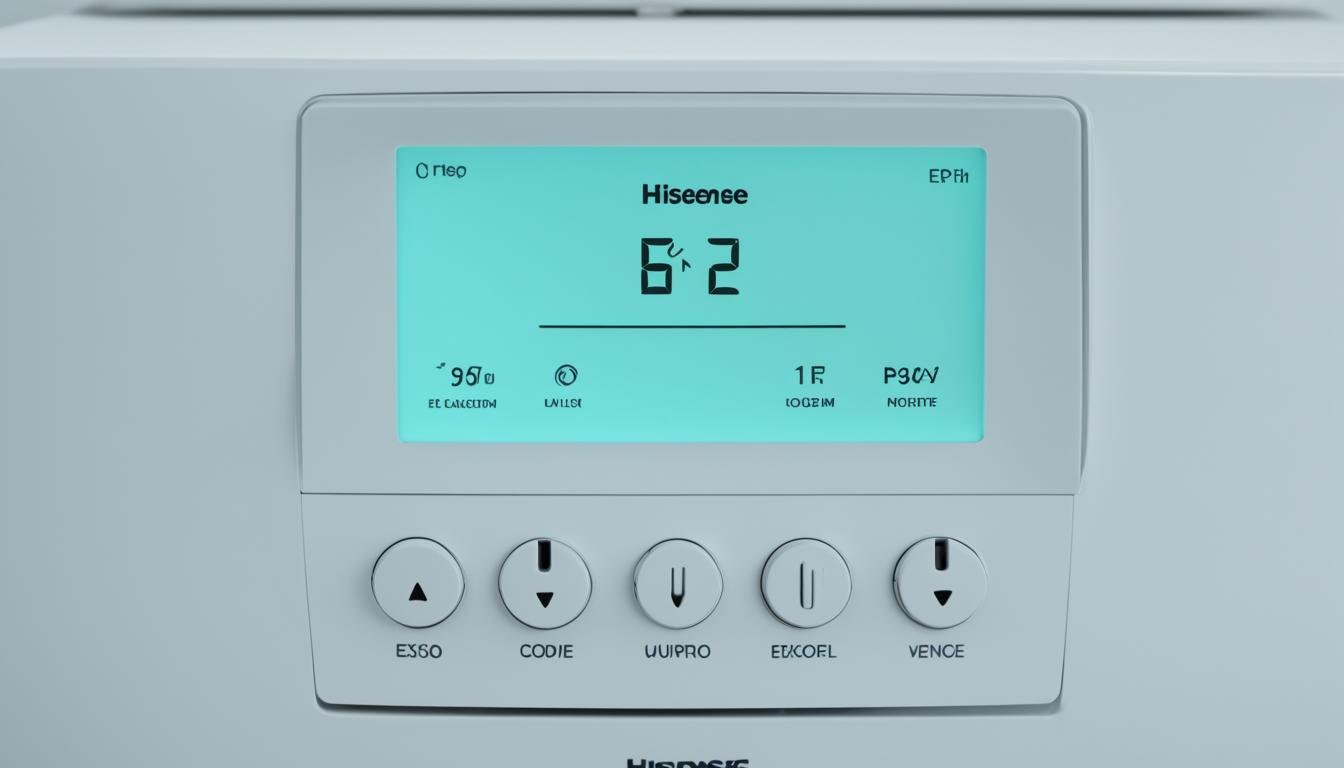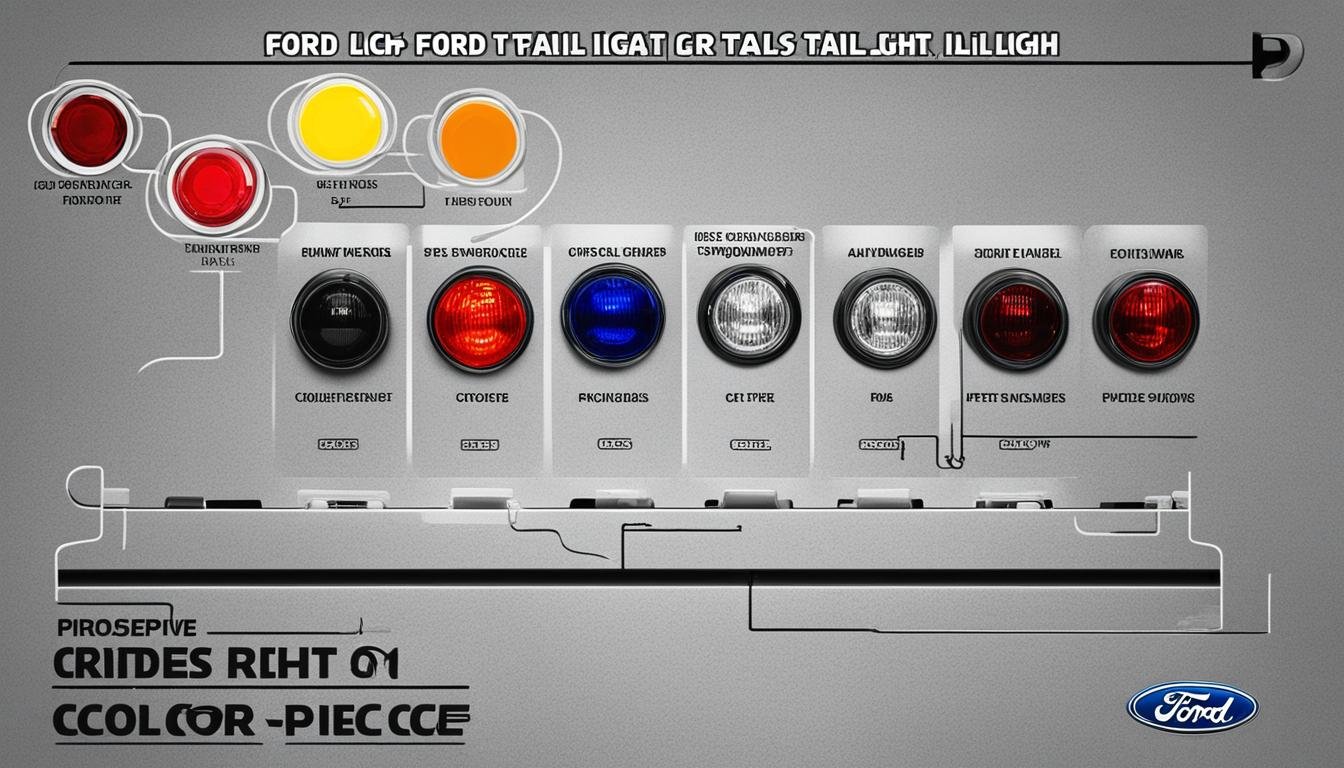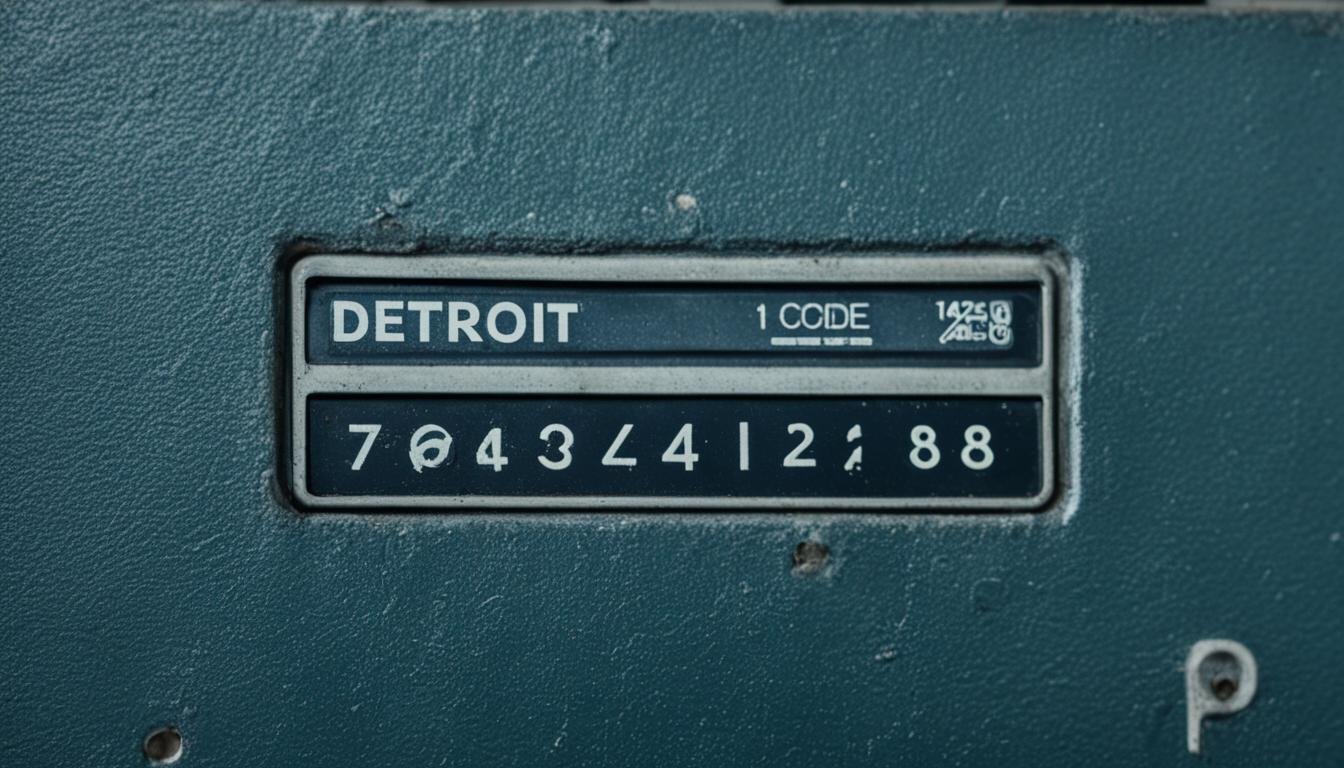If you own a Goodman furnace, you might be familiar with the frustration of encountering the FO1 code. This error code can disrupt the heating system and leave you in the cold. But fear not! In this troubleshooting guide, we will walk you through the steps to diagnose and fix the FO1 code, ensuring your furnace operates smoothly and efficiently.
Key Takeaways:
- Understanding the FO1 code in Goodman furnaces is essential for effective troubleshooting.
- Checking the thermostat, power supply, and fault codes are crucial steps in diagnosing the issue.
- Inspecting the inducer motor, ignition system, and gas supply can help pinpoint the problem.
- Common causes of the FO1 code include clogged condensate drains and dirty furnace filters.
- Maintaining regular furnace maintenance and addressing common causes can prevent the FO1 code from recurring.
Troubleshooting the Inducer Motor and Ignition System
The inducer motor and ignition system are crucial components of your furnace’s operation. Understanding how to troubleshoot and address issues with these parts can help you ensure the optimal performance of your heating system. In this section, we will explore common problems related to the inducer motor, ignition system, and other associated components.
Inducer Motor
The inducer motor is responsible for expelling flue gases from your furnace through the exhaust vent. If the motor is too hot or burnt, it may result in the interruption of the furnace’s operation. To check the temperature of the inducer motor, exercise caution and touch it gently. If it feels excessively hot, it could indicate a problem.
Ignition System
There are different types of ignition systems used in furnaces, such as spark igniters and hot surface igniters. These systems provide the necessary ignition source to light the burners and initiate the heating process.
- If you can see the pilot light or observe the hot surface igniter glowing, but the burners fail to ignite, it could indicate a problem with the gas valve, circuit board, or gas supply.
- Inspect the spark igniter to ensure it is producing a spark. If it is not, there may be an issue with the igniter or its connection.
Another essential component of the ignition system is the flame sensor, which confirms the presence of a flame. A dirty or malfunctioning flame sensor can prevent the proper flow of current, leading to low or no flame detection.
Gas Supply
The availability of sufficient gas supply is vital for proper furnace operation. To ensure the gas supply is adequate, consult a certified gas technician who can measure and verify the gas pressures. Gas pressure for L.P. Gas typically ranges from 10” to 12.5” W.C, while natural gas ranges from 7” to 11” W.C. Maintaining the appropriate gas pressure is critical for efficient combustion and reliable furnace performance.
By troubleshooting the inducer motor, ignition system, and gas supply, you can diagnose and address potential issues affecting your furnace’s operation. Remember, if you encounter complex problems or lack the technical expertise, it is always recommended to consult a qualified HVAC professional for assistance.
| Component | Possible Issues | Solutions |
|---|---|---|
| Inducer Motor | Motor is too hot or burnt | Replace the motor if required |
| Ignition System | Failure of spark igniter or hot surface igniter | Check and replace the faulty igniter |
| Malfunctioning gas valve or circuit board | Consult a professional for repair or replacement | |
| Flame Sensor | Dirty or faulty flame sensor | Clean or replace the flame sensor |
Common Causes and Solutions for FO1 Code
In Goodman furnaces, the FO1 code is often triggered by a few common issues that can be easily resolved. One of the primary causes is a clogged condensate drain, which can lead to the furnace shutting off. To address this issue, it is important to remove any blockages from the condensate drainpipe to restore proper drainage. By ensuring a clear and unobstructed flow, you can prevent the FO1 code from recurring.
Another common culprit behind the FO1 code is a dirty furnace filter. When the filter becomes clogged with debris and dust, it can obstruct airflow, causing the furnace to overheat and shut off prematurely. Regular maintenance is key to prevent this problem. It is recommended to replace the furnace filters every 2 to 3 months to maintain optimal airflow and prevent the FO1 code from appearing.
Proper furnace maintenance is crucial for preventing issues like clogged condensate drains and dirty filters. By implementing a regular maintenance routine, you can keep your furnace in optimal condition and minimize the chances of encountering the FO1 code. In addition to regular filter replacements, it is important to clean the condensate drain and ensure proper drainage. By addressing these common causes and proactively maintaining your furnace, you can enjoy uninterrupted heating and avoid the inconvenience of dealing with the FO1 code.
FAQ
How can I fix a Goodman furnace FO1 code?
To fix a Goodman furnace FO1 code, you can start by checking the thermostat and ensuring it is calling for heat. Make sure there is power going to the furnace by checking the breaker and resetting it if needed. If the breaker keeps tripping, it may indicate a short circuit and require the expertise of an HVAC contractor. You can also remove the front cover of the furnace and observe the flashing sequence of the LED lights to identify the specific issue using the provided LED error codes. Additionally, check components such as the inducer motor, exhaust and intake vents, flame sensor, gas supply, and condensate drain for potential causes of the FO1 code.
How do I troubleshoot the inducer motor and ignition system?
To troubleshoot the inducer motor and ignition system, you can start by checking the temperature of the inducer motor and ensuring it is not too hot or burnt. Different furnace models may use different types of ignition systems, such as spark igniters or hot surface igniters. If you can see the pilot light, HSI glow, or hear a spark but the burners don’t come on, it could indicate issues with the gas valve, circuit board, or gas supply. It’s important to inspect the flame sensor as well, as a dirty or malfunctioning flame sensor can lead to low or no flame current. Consult a certified gas technician to check the gas pressures and ensure they fall within the appropriate range.
What are the common causes and solutions for the FO1 code in Goodman furnaces?
The FO1 code in Goodman furnaces can be caused by clogged condensate drains, which can be resolved by removing any blockages from the drainpipe. A dirty furnace filter can also cause blockage of airflow, leading to overheating and premature shutdown of the furnace. Regularly replacing the furnace filters every 2 to 3 months can help prevent this issue. Additionally, regular furnace maintenance can help prevent issues like clogged condensate drains and dirty filters. By addressing these common causes and implementing regular maintenance, you can help prevent the FO1 code from occurring in your Goodman furnace.






Leave a Reply